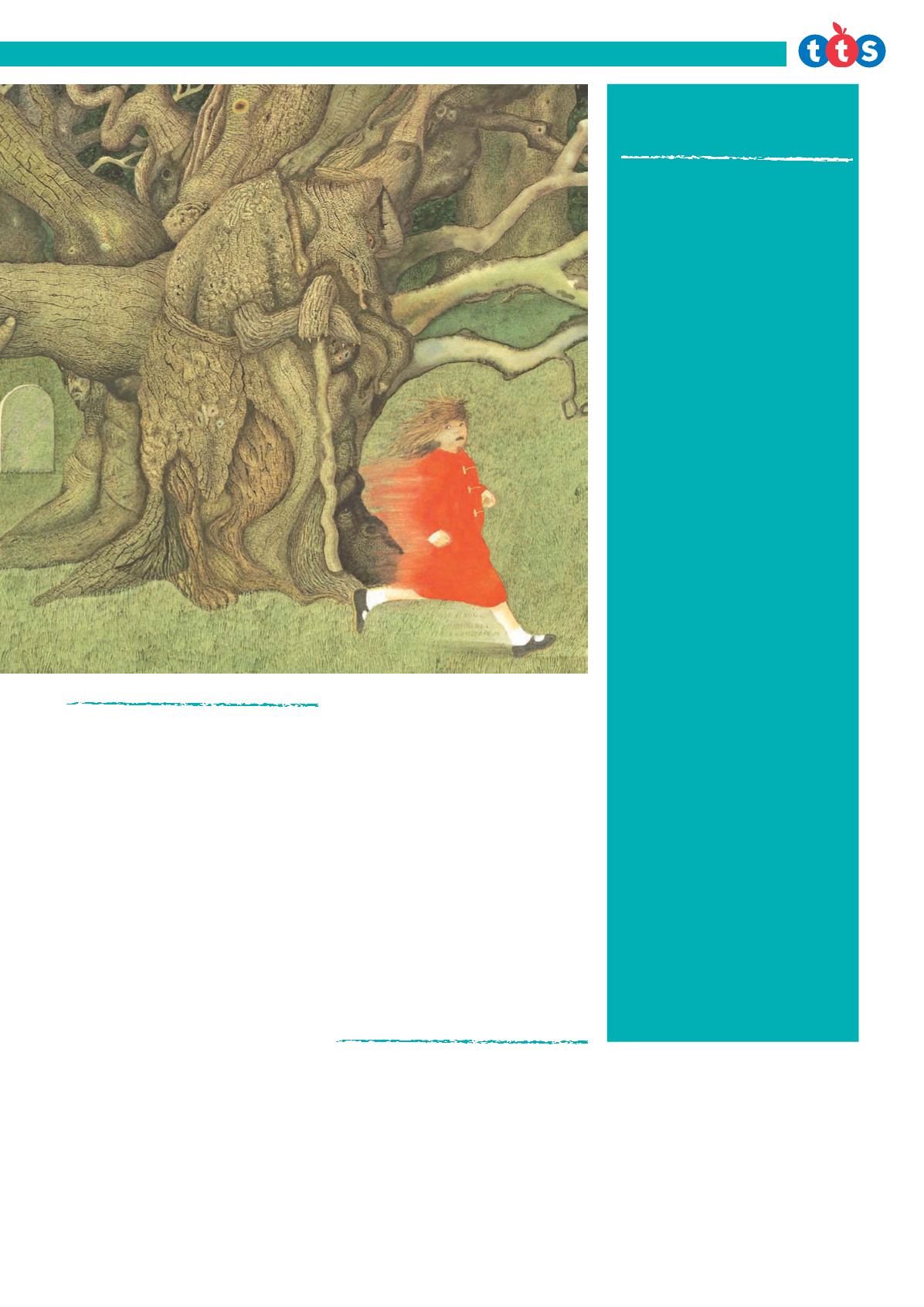
TEACH READING & WRITING
57
BECOME ART INVESTIGATORS
BEHAVE LIKEAN
ILLUSTRATOR
HEREAREAFEWSUGGESTIONS
OFWAYSYOUANDYOURPUPILS
CANBREATHENEWLIFEINTOSOME
FAVOURITEPICTUREBOOKS:
Illustrators look closely at everything
around themandpay attention to
colours, textures, shapes anddetails.
They think imaginatively and ask lots of
questions.What if…thatwheel turned
into an apple?What if... the people
visiting the zoowere like animals?What
if…the treeswere hiding awolf?A
pumpkin?An axe?
GET SKETCHING
Give children a small sketchbook for
recording notes and ideas. Illustrators
use differentmethods fromquick
thumbnail sketches to full-page
drawings – look at some artists’
sketchbooks (which can be quitemessy)
to showchildrenwhat’s possible. Hold
one-to-one ‘sketchbook reviews’ and
allocate time for children todevelop
their ideas intopictures.
MAKE A PICTUREBOOK
Being an illustrator is a bit like being a
filmdirector. Imaginefilming everything
that happens to you in a single day. It
wouldbe long andboring!Whatwould
you cut tomake itmore interesting?
Nowtrymaking a picturebook about
your day, insteadof afilm.
EXPLORE THE SHAPE GAME
Challenge children todoodle as away
of connectingwith their subconscious.
Encourage themto look carefully
anddrawfrom life, tobe positive
and confident and to critique each
other’sworkwith sensitivity.Welcome
different styles and approaches; share
outcomes and value them.
PLAYWITH PICTURES
Visit an art gallery and choose paintings
to act as a starting point for new
stories. CreateWilly’s Pictures-style
illustrationswith them.
Developvisual literacy
In 2001-2Anthony Brownewas artist-in-
residence at Tate Britain as part of the
Visual Paths project, which explored the use
of great works of art to inspire children’s
literacy development. Many of Browne’s
books already featured classicworks of art,
either as a background detail or as part
of themain narrative (as inWilly’s Pictures);
Browne tries tomake his pictures tell most
of the story and is interested in theway that
words and imageswork together – “I like to
include...gaps between the two components
that the reader has tofill...” His books are a
great way for children to explore the impact
of composition, style and page layout on the
reader’s experience.
This ability to ‘read’ and talk about
pictures is a key life skill. And in thisworld
of advertising andmanipulative imagery, it’s
important to bemore critically aware!
Share
Voices in the Park
. What do the
pictures tell us about theway each character
thinks and feels? Encourage children to look
closely and ask lots of questions.
Talk about colour andwhat it suggests.
Talk about style. Has the image been drawn
loosely?With a hyper-realistic attention to
detail?Or in some other way? Talk about size
and scale. Is this image a close-up or does it
showa long perspective? Talk about framing.
What could a heavy frame tell us, andwhy
might an object or person break through it?
Talk about point of view. If this imagewere
a photograph, wherewould the photographer
be?What does this add to our experience?
Talk about gaze. Where are the characters
looking, andwhy? Talk about the chosen
medium (such as charcoal or watercolour)
and its impact. Talk about the lighting.
Where’s it coming from, andwhy? Are there
any shadows? Talk about pacing. Is there a
single picture on a page, or several? Arewe
encouraged to take our time or turn the page
quickly? And talk about those hidden details...
why are they there?
Nowapply your critical skills toZoo,
Hansel andGretel or The Tunnel before
splitting into pairs to explore awider
collection of Browne’swork.
Build onwhat’s been learned bywriting
about it. Report onwhat you’ve done, write
explanatory guides to help other children
getmore out of a specific title or contribute
an article to a classmagazine about
Anthony Browne.
The ShapeGamewas a direct outcome
of the residency.
Wearing your ‘art investigators’ hats,
work in pairs to explore images fromWilly’s
Pictures. On a large sheet of paper, write as
many questions about the story behind each
image as you can (e.g. why does that chimp
look so surprised?) Circle the questions that
most interest you and try to answer them.
Lead into storymaking and storysharing.
In association with


